Active 1977–1989 Founded 1980 | ||
 | ||
Size 10,100 (1981)22,000 (1987) Branch | ||
The South West Africa Territorial Force (SWATF) was an auxiliary arm of the South African Defence Force (SADF) and comprised the armed forces of South West Africa (now Namibia) from 1977 to 1989. It emerged as a product of South Africa's political control of the territory which was granted to the former as a League of Nations mandate following World War I.
Contents
- History and Background
- Establishment
- Structure and Activation
- Training
- SADF Supervision
- SWATF Uniform Rank Structure Corps EmblemsProficiency and Ops Badges
- SWATF Commanders
- Brigade
- Battalions
- SWATF Special Forces
- South West African Military Operations Sectors
- Frontline Sectors
- Sector 10
- Sector 20
- Sector 70
- Special Service Companies for Quick Reaction
- Countrywide Sectors
- Sector 30
- Sector 40
- Sector 50
- Sector 60
- SWATF Aircrews
- Armoured
- Soft skinned
- Counter Insurgency
- SWATF Demobilisation
- Withdrawal of some units to South Africa
- References
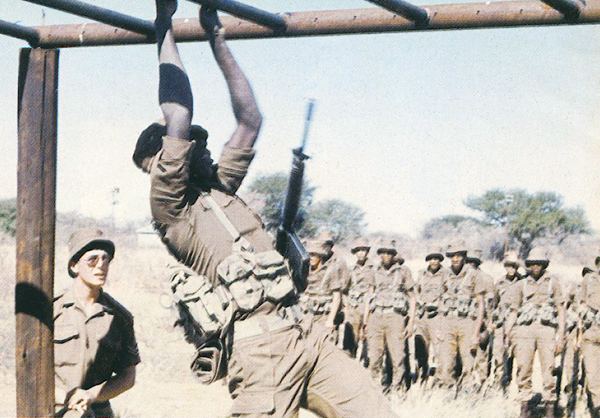
History and Background

From 1966 until 1989, South African security forces waged a long and bitter counterinsurgency conflict against indigenous nationalists in what was then South West Africa, represented by the Marxist South West African People's Organisation (SWAPO) and its military wing, the People's Liberation Army of Namibia (PLAN). As the guerrilla war intensified, however, it became clear that the local civilian police alone were not enough to cope with SWAPO/PLAN incursions and escalating unrest. Consequently, military units were deployed for the first time; 60,000 South African combat troops were engaged in South West Africa by the late 1970s.
Establishment

As part of a general policy of military and social reform, Pretoria initiated the establishment of local defence and police agencies for its protectorate beginning in 1977.
Structure and Activation
A start was also made with the regrouping of existing units into four formations:

As regarding the latter, the South African Air Force would remain responsible for aerial operations although provision was made for an air commando squadron consisting of private and commercially qualified air crews. Their main function was to assist the South African Air Force in reconnaissance and communication flights and to provide operational officers for the operational service.
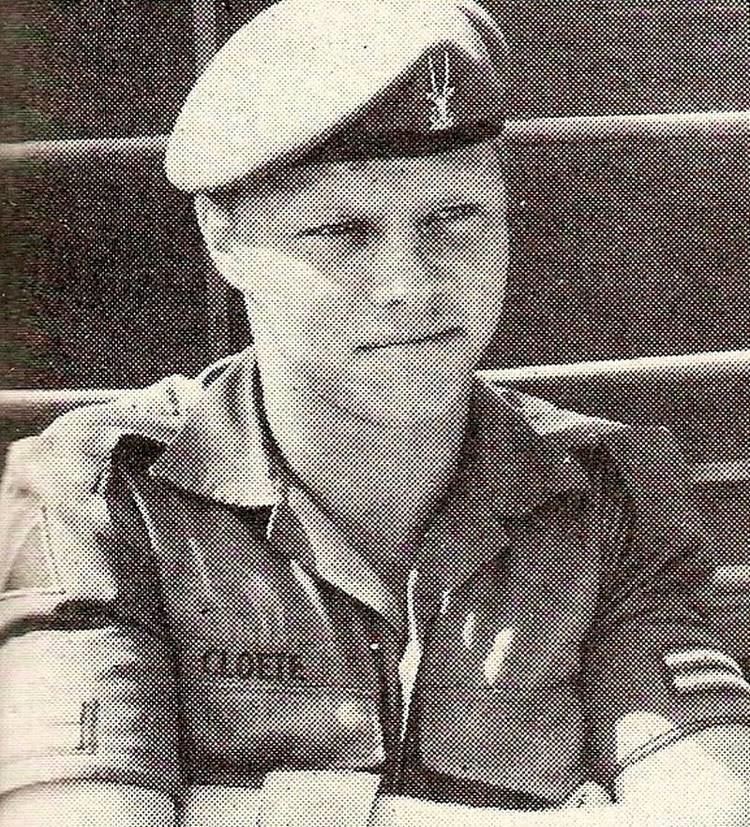
The new South West African Territorial Force was officially created on 1 August 1980, from South West African citizens already serving with the South African Defence Force.
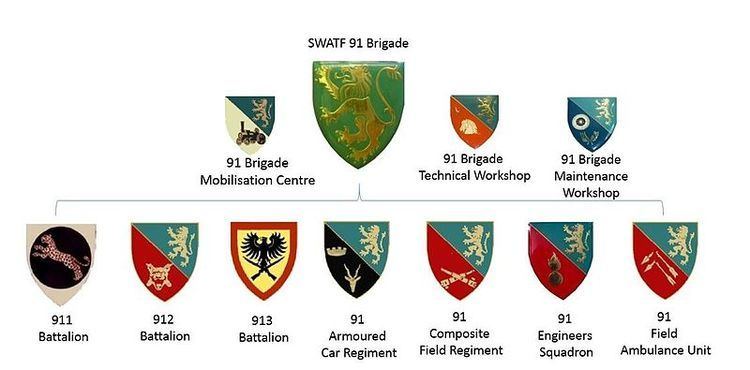
Operationally, the SWATF was further divided into a Permanent Force infantry component, logistic/administrative divisions, a training wing, and a Citizen Force, which included at least three motorised infantry battalions. The 'permanent force' comprised mostly volunteer auxiliaries and national servicemen, who formed eight battalions. A militia system was also developed for local security, including over twenty 'area protection units'.
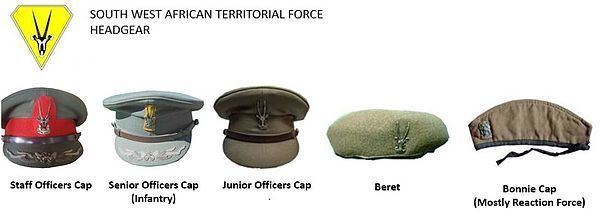
By 1981, SWATF's total strength numbered some 10,100 men, organised into both tribal-based battalions (including separate units for Ovambo, Herero, and Coloured ethnic groups) and multiethnic units partially manned by at least 10,000 white South West African personnel.
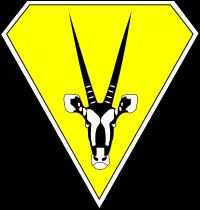
By 1987, SWATF had an estimated 22,000 troops, including additional units of engineers, signals personnel, mounted troops, a parachute battalion, and a commando squadron.
Training
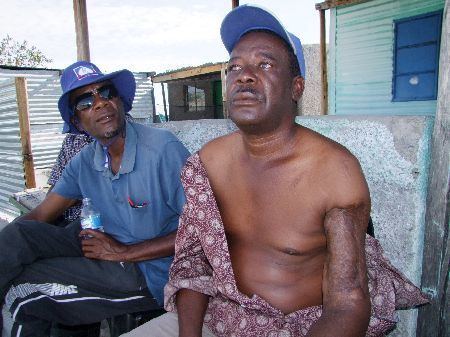
Primarily all SWATF members received their initial training at 2 SA Infantry Battalion at Walvis Bay, (considered South African territory at that stage)
Advanced training, NCOs and Officer development however occurred at the SWA Military School at Okhandja
SADF Supervision
For all practical purposes, SWATF remained firmly integrated into existing SADF command structures. Its primary goal was protection of the territory of SWA from SWAPO incursions. The SWATF was placed under the control of the Department of Defence for South West Africa and was always headed by a SADF general. There was also a joint SWATF/SADF committee established for "planning, liaison, and coordination" efforts.
SWATF Uniform, Rank Structure, Corps Emblems,Proficiency and Ops Badges
The first major step in the establishment of an independent territorial defence force in SWA was the introduction of a new uniform on 6 September 1979 through which SWA units could be distinguished from SADF units.
The rank structure of the SWATF was identical to that of the SADF. The insignia however differed considerably.
SWATF Commanders
Brigade
Battalions
Modular Battalions main function was internal operations. Sub units were attached according to the requirements of a specific situation, i.e. the "modular nature". They were made up from elements (or ‘modules’) from a variety of units and would be deployed in company patrol bases along the border. There was usually a company of SWATF attached to each Modular Battalion on rotation to provide ‘local knowledge’ and various elements of 1 SWA Specialist Unit were also attached to provide tracking and patrolling expertise. Koevoet or Romeo-Mike teams were also frequently stationed in these company bases for mutual protection, but would generally operate independently. The Modular Battalions’ heavy weapons often included a wide variety of captured Soviet and obsolete British World War II-era items, which were usually static, being primarily intended for base defence. Motor transport was limited, with a few Buffels being retained for patrolling and SAAF helicopters often being utilised for inter-base liaison. The companies of a Modular Battalion were generally weak during the quiet dry season (maybe 30- 50% strength), but would each be brought up to the full strength of five platoons in time for the Wet Season, which was when the bush would become jungle and SWAPO-PLAN infiltration teams would stream southwards. Their main responsibility was to secure their assigned area in which they conducted cordon and search operations, patrols, checkpoints, mine sweeping and the protection of roads and water systems.
SWATF Special Forces
Although SWATF relied heavily on South Africa's special forces, but over time it developed its own capability.
South West African Military Operations Sectors
By 1979, South West Africa was subdivided into Operational Sectors. Three Frontline Sectors, 10, 20 and 70 fell under direct South African Army Command. Four additional Sectors, 30, 40, 50 and 60 covered the rest of South West Africa and was commanded directly by SWATF officers from 1980.
Frontline Sectors
Frontline Sectors were used for the massing of forces in preparation for external operations into Angola, acting as a buffer with the rest of the territory and reaction to immediate threats. Although theoretically under control of the Area Force, due to their proximity to Angola the vast majority of conventional forces was based in these areas.
Sector 10
(Kaokoland and Owambo) - HQ Oshakati
Other units in this Sector included:
Sector 20
(Kavango and Western Caprivi) - HQ Rundu
Sector 70
(Eastern Caprivi) - HQ Mpacha
Special Service Companies for Quick Reaction
These frontline Sectors also had immediate reaction forces (Special Service Companies) to deal with any attack and were primarily infantry company strength and fully motorised.
Countrywide Sectors
Apart from the Frontline Sectors, four additional Sectors existed. 26 Area Force Units, similar to the South African commando system, was established for these less vulnerable parts of the territory.
Sector 30
HQ Otjiwarongo (Citadel).
SWATF Otjiwarongo AME (Area Force Unit - Area Mag Eenheid), Outjo AME, Grootfontein AME, Tsumeb AME, Herreroland AME, Ethosa AME, Otavi AME, Damaraland AME and UIS PL. Its area of responsibility was likewise the Grootfontein, Tsumeb, Otavi, Outjo, Otjiwarongo, Hereroland and Damaraland regions.
Other Units in this Sector:
Sector 40
HQ Windhoek.
SWATF Alte Feste AME, Khomas AME, Hochl AME, Okahandja AME, Omaruru AME, Swakopmund AME, Rehoboth AME, Katatura AME and Khomasdal AME.
Other Units in this Sector:
Sector 50
HQ Gobabis.
SWATF Aranos AME, Auob AME, Bo-Nossob AME, Aminius PL, Gobabis AME, Rietfont AME, Mariental AME and Maltahohe AME.
Sector 60
HQ Keetmanshoop.
SWATF Karasburg AME, Keetmanshop AME, Hoop AME, Bethanien AME, Oranjemund AME, Luderitz AME and Namaland AME.
SWATF Aircrews
While the SWATF relied heavily on the South African Air Force for combat and heavy logistics transportation, it did have its own Air Wing, which consisted mainly of civilian aircraft.
1 SWA Commando Squadron was established as 112 Air Commando on 24 September 1963 in Windhoek. The unit was staffed by volunteer civilian aircraft. From 1968, control of 112 Commando squadron passed from the SA Army to the SAAF and it was transferred to Light Aircraft Command. In 1970, it was disbanded, but in 1980 it was re-established as part of the SWATF.
Armoured
Soft-skinned
Counter Insurgency
A lot of effort was used to interdict insurgent groups that had crossed over the Angolan border. These Insurgents were on foot, but knew the land and moved fast. There have been stories of the insurgents moving incredible distances with little supplies, whilst being chased and if cornered putting up a good resistance to their followers. Adrenaline injections were found at some of the incident scenes after a fire fight.
These insurgents were normally stalked by using trained trackers, who directed the reaction force. In some instances a stopper group was choppered in to cut off the insurgents before they reached the border.
SWATF Demobilisation
Under UN resolution 435, the United Nations Transition Assistance Group was mobilised, while SWATF was demobilised, its strength in the last years of operation was at about 22,000.
Special arrangements were made for two San units of SWATF, as they originated from local tribal communities. They were thus allocated land near their previous bases.
All citizen force units were demobilised.
The SWATF was completely demobilised on 1 June 1989.
Withdrawal of some units to South Africa
UN Resolution 435 additionally called on South Africa to reduce its forces in Namibia to 12000 before the start of any peace process and finally to 1500 by 1989.
Several thousand especially from the San people, fearing reprisal or intimidation, left for South Africa with the SADF.
32 Battalion, whose members to a large extent could not claim Namibian citizenship, also withdrew to South Africa completely.
